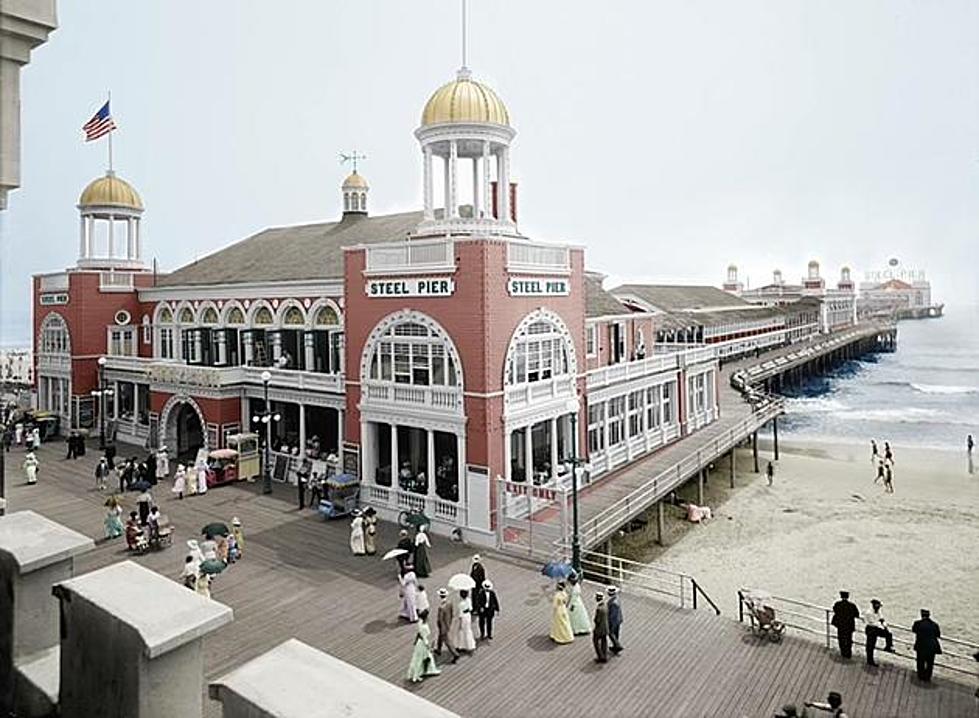
Much-anticipated fossil museum set to open at a NJ university this fall
⚫ A nearly $75 million fossil park/museum is set to open soon at Rowan University
⚫ The exhibit space is above a former marl quarry filled with sea and land fossils
⚫ The park and museum will focus on the late Cretaceous period
GLASSBORO — Attention history and archaeology buffs!
Set to open sometime this fall is a fossil park and museum as part of Rowan University in South Jersey.
The Jean and Ric Edelman Fossil Park and Museum is 44,000 square feet of exhibit space set above a former marl quarry, filled with marine and terrestrial fossils from 66 million years ago, according to Smithsonian Magazine.
The university broke ground on the nearly $75 million fossil park museum in October 2022. The fossil park was slated to open in May 2023, but, according to Rowan University's Assistant Director of Media and Public Relations, Stephen Levine, the soft opening will take sometime this fall. An exact date has not been unveiled.
“This is the only facility east of the Mississippi River that features an actively open quarry for public digs,” the magazine reported.
What is the fossil museum?
The museum and its surrounding 65-acre Edelman Fossil Park will focus on the Late Cretaceous period when dinosaurs roamed the New Jersey coastline.
The museum is expected to attract an estimated 200,000 or more guests per year, according to Rowan.
Think of the project as “modern design meets ancient past,” the university explained. It embraces sustainability, preservation, and site-specific design with high-tech, interactive galleries and exhibits.
According to the university website, research at the site was led by Fossil Park Director and Founding Dean of Rowan’s School of Earth and Environment, Dr. Kenneth Lacovara.
The research sheds light on ancient events that led to the world’s 5th mass extinction, during which dinosaurs and 75% of species went extinct.
The museum will feature full-scale reconstructions of extinct creatures, hands-on learning experiences, live animal attractions, virtual reality, connections to the natural world, and gathering spaces to build a community around the themes of exploration, discovery, and responsible stewardship of Earth.
How does the museum contribute to sustainability?
Another cool feature is that the museum will be New Jersey’s largest public net zero facility, according to Rowan. That means that 100% of the energy used by the museum will come from a combination of green energy and renewable energy produced on-site. No fossil fuels will be used and no greenhouse gases will be released into the atmosphere.
What can guests expect to see inside the museum?
There will be both land and sea galleries of the late Cretaceous worlds inside the museum. Guests will be treated to a recreated Dryptosaurus, the first discovered tyrannosaur, which was found about a mile from the fossil park site in 1866, Rowan reported.
The Hall of Cretaceous Seas will feature a collection of marine recreations, including a mosasaur, a type of sea-dwelling lizard that was unearthed on-site by world-renowned paleo sculptor, Gary Staab.
The Hall of Extinction allows visitors to experience the demise of dinosaurs and immerse themselves in knowledge about the ongoing climate and biodiversity crises.
Discovery Forest features hands-on learning stations. Critter Cove contains sea and land animals with genetic connections to the site during the late Cretaceous era.
Guests can also enjoy a fossil research workshop, a virtual reality chamber, a café, a museum store, a paleo-themed playground, and nature trails.
Be sure to head outside to the quarry to dig for fossils alongside Rowan University paleontologists.
Fossils found at the site in the past include the remains of bus-length mosasaurs, marine crocodiles, sea turtles, boney fish, shark teeth, brachiopods, marine snails and much more.
So, who knows what you might find on the grounds of a fossil museum, right?
Jen Ursillo is a reporter and anchor for New Jersey 101.5. You can reach her at jennifer.ursillo@townsquaremedia.com
Click here to contact an editor about feedback or a correction for this story.
LOOK: Food and Personal Care Shortages We Could See In 2023
More From Beach Radio










